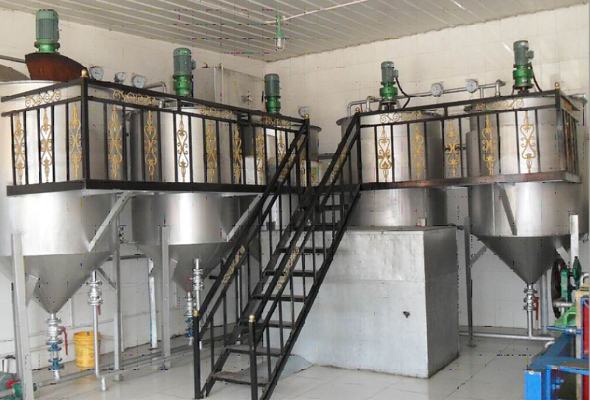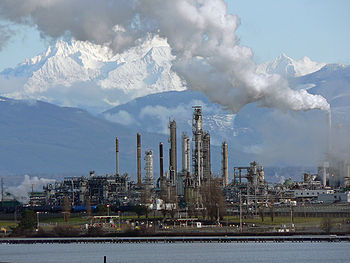An oil refinery plant converts crude oil into useful forms such as gasoline, kerosene and diesel. They are usually large industrial plants that handle large amounts of crude oil. The oil is delivered to big tanks through an extensive network of pipes.
Oil is not useful in crude form hence the need to refine it.

It contains millions of molecules that are explosive which need to be separated into useful components. The crude oil is passed through a heating system in order to break it down into vapor. The vapor is then passed into a condensation tower whereby it is converted into fuels such as propane and gasoline. The heavier liquids turn into kerosene and diesel while the residue at the bottom is converted into materials such as wax, grease, lubricating oils as well as asphalt.

Each liquid is fed to a different chamber where poisonous particles are removed before it can be released for human consumption. The liquid undergoes several processes before it can be declared fit for human consumption. For the heavy liquid at the bottom of the chamber, it is taken to a catalytic chamber where it is converted into additives such as seals, gas and flooring. The lighter materials, on the other hand, are subjected to high pressure for a process known as hydrocarbon cracking.

Oil refinery plants have been blamed for emitting chemicals into the air which are harmful to human health. The emissions also produce an odor that is unpleasant. Therefore, the plants should be built away from human settlement.
-
Recent Posts
Archives
Categories
- Choosing Oil Refinery Plant
- Determine Oil Refinery Plant Cost
- In Waste Oil Refinery Plant
- Oil Extraction Process
- Oil Filter Machine
- Oil Pretreatment
- Oil Refinery on Sale
- Oil Refinery Plant
- Oil Refinery Plant Design
- Oil Refinery Plant Works
- Oil Refinery Process
- Oil Refinery Products
- Olive Oil Processing
- Palm Oil Processing
- Palm Oil Refinery Plant
- Seed Press Machine
- Soybean Oil Extraction
- Types of Cooking Oil
- Uncategorized
- Vegetable Oil Refinery Plant
